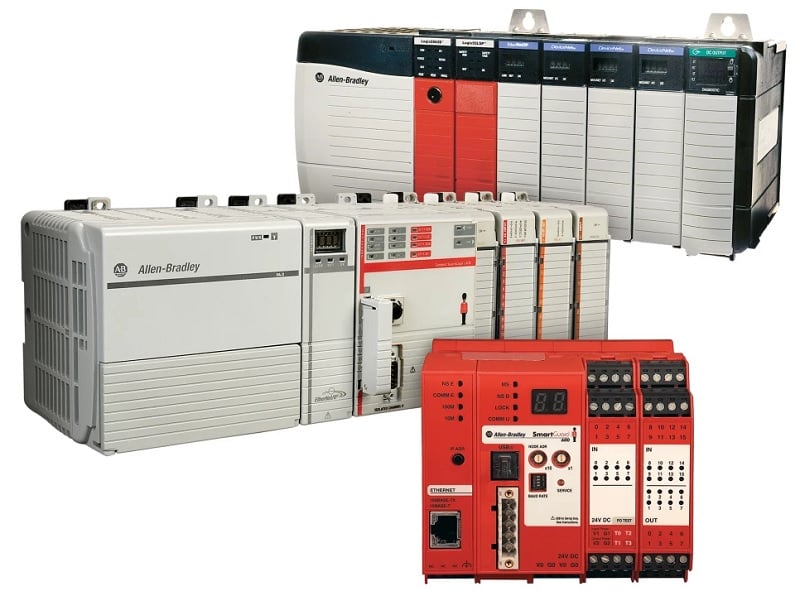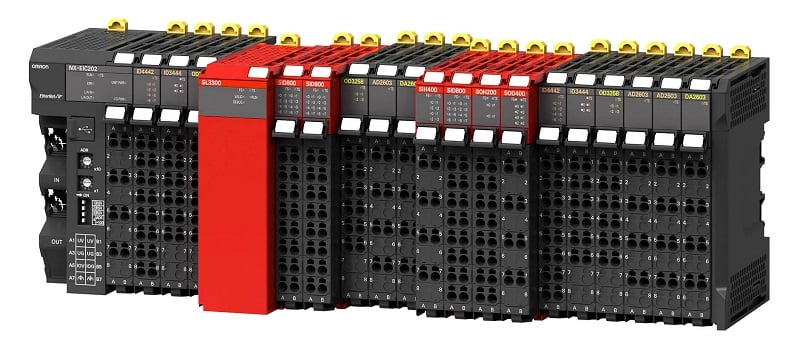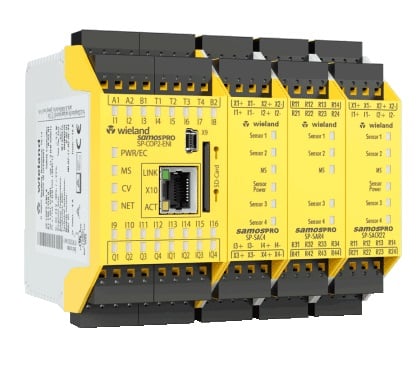This article investigates the basic qualities that make up a safety PLC, what distinguishes a safety PLC from a standard model, and the reasons for which a safety PLC may be critical.
Programmable logic controllers, or PLCs, are a very common type of controller used in automation. They are the baseline of many different automated control tasks and are used to control everything from egg palletizing machines to conveyor systems. PLCs are also used extensively in automated cell safety systems.
Review of Safety in Automation
Safety systems for automation rely on their own set of standards and are often required to be on their own specific circuit, separate from the rest of the automated cell control system. This means that safety PLCs require their own unique type of construction, installation guidelines, and best practices. In addition, safety PLCs must conform to the guidelines established for a specific Safety Integrity Level (SIL) in order to be truly advertised as safety PLCs.
Differences Between a Safety PLC and a Standard PLC
So we know that there are differences between a safety PLC and a standard PLC, but what are the main things that set them apart?
A PLC is meant to execute progress logic, and both safety and regular PLCs can be used to perform many different tasks necessary for the effective operation of a manufacturing plant or automated processes. Traditionally, automation safety has been developed outside of PLC infrastructure through the use of safety I/O devices, safety relays, and safety controllers, but a safety PLC combines process logic technology with safety in an effective manner.

Figure 1. Standard and safety PLCs look and operate in a similar manner, but safety PLCs contain more redundancy and safety-specific features, usually indicated with a bright color (red or yellow).
Safety PLCs can complete the same tasks and be used in the same ways as a traditional PLC but they have additional built in features that set them apart. They are built with redundancy in mind to help prevent failure. Since device failure and malfunctions are never 100% avoidable, safety PLCs have predictable failure modes that reduce the amount of disruption to the system in case of failure. Safety PLCs are also equipped with a safety circuit between the output and connected devices to ensure extra protection during a malfunction.
Why Use a Safety PLC?
So essentially, a safety PLC is just a PLC with some extra redundancy built in. But why do we use them, where should they be used, and what are the benefits of these devices?
Safety PLCs are more complex than standard PLCs and therefore more expensive. This cost is often offset by the benefits and reduced electrical complexity provided by their use in the system.
Since safety PLCs can be used in place of safety relays, wiring complexity is reduced while simultaneously reducing time, labor costs, and wiring cabinet size. In addition, future modifications to the system become easier and less expensive with a safety PLC, since program edits are all that generally must be changed. With traditional safety systems, physical infrastructure and wiring need alteration, introducing extra labor costs for future modifications.

Figure 2. This safety PLC conforms to SIL 3 ratings and contains safety-rated programming object blocks that meet IEC 61131 standards.
Safety Details
It is important to know that a safety PLC is the correct choice for the intended application. What ensures that this PLC really is safe? There are several important distinctions that can provide confidence in the safety level provided with the use of a safety PLC.
Safety PLCs do not require any specialized software programming but they can be isolated from the rest of the systems logic for safety reasons. Once a safety PLC and its programming have been tested and validated, the programming in the PLC can be locked so unauthorized users do not have access to it. This helps to reduce the chance of accidental, or malicious corruption of safety programming.
When to Use a Safety PLC
In many cases, it makes sense to use a safety PLC instead of safety relays when the task at hand is more complicated. More complicated tasks can give a quicker return on the time and money invested into the system. Safety PLCs can effectively reduce the complexity of a system by reducing the amount of wiring necessary. They can also help to speed up any safety changes that the cell may need in the future with a simple change in logic instead of physical wiring.

Figure 3. For simpler, less complex safety installations, a safety controller like this one may be a more cost-effective way to achieve proper safety controls for a cell.
For simple safety tasks on small cells, the additional cost of a safety PLC may not make sense. For example, in a simple cell that includes a single light curtain and E-stop with no other safety infrastructure, the addition of a safety PLC will most likely cost more and add to the complexity of the system when compared to a safety relay or safety contactor. Each application should be carefully assessed before deciding between traditional safety and a safety PLC.
How Safe are Safety PLCs?
Traditional safety systems in automation and manufacturing rely on safety relays, a well-known and effective way to make systems safe. Safety PLCs are relatively new in comparison, so it seems natural to wonder just how “safe” they really are. Safety PLCs must all follow a set of guidelines that ensure they are safe for use. Safety PLCs are usually third-party verified before use and must meet different international safety standards before they can be marketed formally with the safety rating.
In order to be considered a safety PLC, the device must have an SIL number of 3 or greater to ensure a high level of performance, meaning that it will detect greater than 99% of all potential failures. In order to ensure that the safety PLCs function properly each one must be tested by downloading corrupted programs into them. This helps to make sure that they operate correctly when subjected to such a test in reality. In addition, the silicon used in them must come from different lots in order to reduce the chances of redundant failures.
Copyright Statement: The content of this website is intended for personal learning purposes only. If it infringes upon your copyright, please contact us for removal. Email: admin@eleok.com
